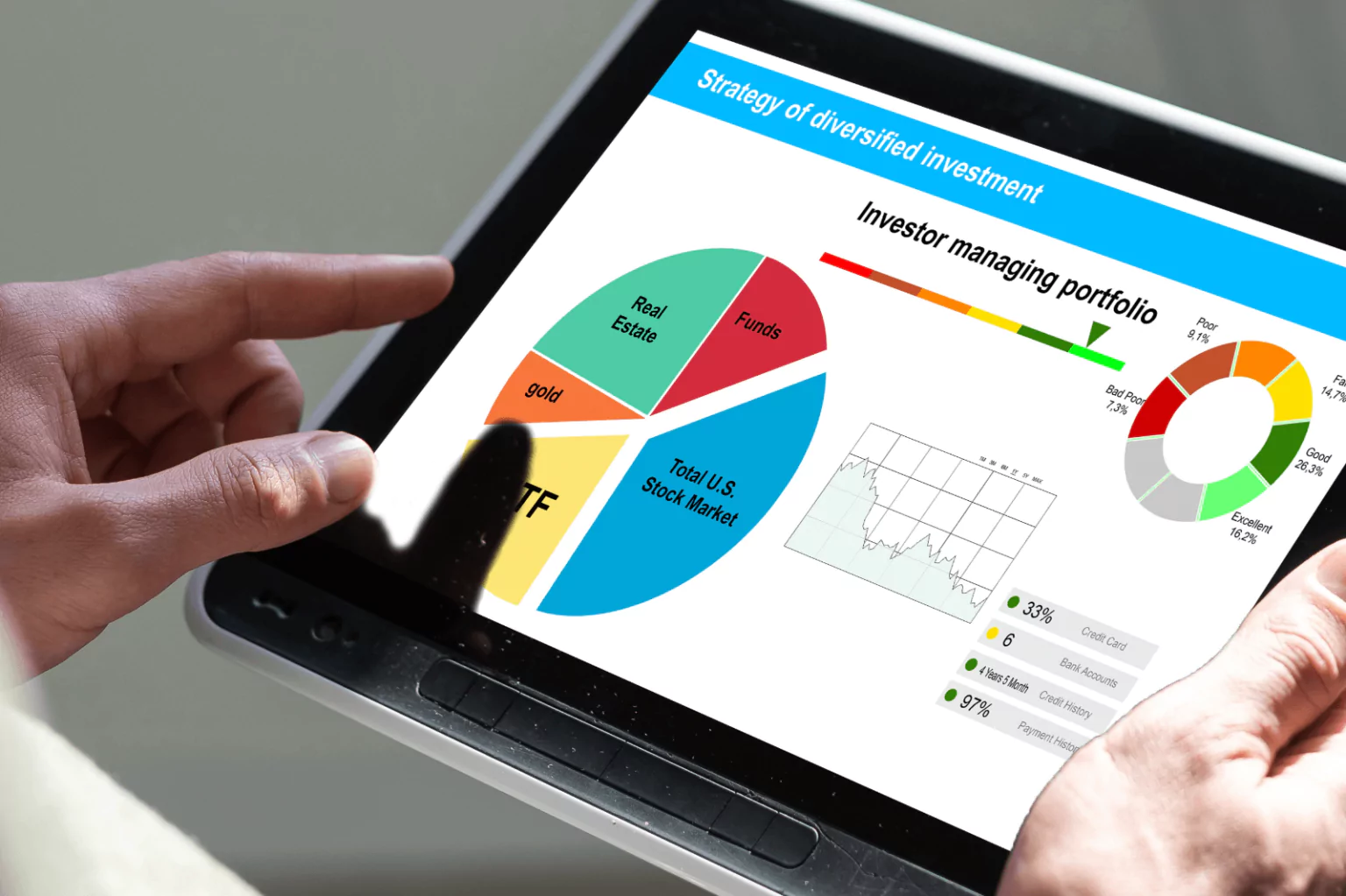In today’s volatile financial markets, building a robust investment strategy is crucial for achieving long-term financial goals. This article provides a comprehensive guide on how to develop a solid investment strategy that can withstand market fluctuations and provide consistent returns. The tips shared here are designed to help both novice and seasoned investors make informed decisions, ensuring their portfolios remain resilient and profitable over time.
Understanding the Basics of Long-Term Investment
Long-term investment involves committing funds to assets for an extended period, typically five years or more, to maximize returns and minimize risks. This approach allows investors to benefit from the compounding effect, where earnings generate more earnings over time, significantly boosting the overall return on investment. By holding onto investments for a longer period, investors can also ride out short-term market volatility, reducing the impact of temporary market downturns and taking advantage of the general upward trend of the market.
An investment in knowledge pays the best interest.
Benjamin Franklin This approach contrasts sharply with short-term trading, where the focus is on quick gains and often involves frequent buying and selling of assets. Short-term trading requires constant market monitoring and a higher tolerance for risk, as market fluctuations can lead to significant gains or losses within a short period. In contrast, long-term investment emphasizes stability and steady growth, encouraging investors to remain patient and avoid making impulsive decisions based on short-term market movements. By maintaining a long-term perspective, investors are better positioned to achieve their financial goals with less stress and lower transaction costs.
Why Long-Term Investment?
Investing for the long term allows for the compounding of returns, which can significantly enhance your wealth over time. It also helps in weathering market volatility, providing a more stable growth trajectory.
1. Set Clear Financial Goals
Establishing clear, measurable financial goals is the foundation of any investment strategy. Whether saving for retirement, a child’s education, or buying a home, defining these goals will shape your investment choices.
How to Set Financial Goals
- Specific: Clearly define what you want to achieve.
- Measurable: Quantify your goals to track progress.
- Achievable: Set realistic targets considering your financial situation.
- Relevant: Ensure your goals align with your long-term plans.
- Time-bound: Set a timeline for achieving your goals.
2. Diversify Your Portfolio
Diversification involves spreading investments across various asset classes to reduce risk. A diversified portfolio can mitigate losses in one area with gains in another.
Importance of Diversification
By investing in different assets such as stocks, bonds, real estate, and mutual funds, you can protect your portfolio from significant losses due to market fluctuations.
3. Understand Risk Tolerance
Risk tolerance is your ability to endure market volatility without panic. It’s essential to assess this before making investment decisions.
Assessing Your Risk Tolerance
Consider factors such as your age, income, investment goals, and financial obligations. Tools like risk tolerance questionnaires can help gauge your comfort level with risk.
4. Research and Choose the Right Investment Vehicles
Selecting the appropriate investment vehicles is crucial for aligning with your financial goals and risk tolerance.
Common Investment Vehicles
- Stocks: Ownership shares in a company with potential for high returns and risks.
- Bonds: Debt securities offering fixed returns with lower risk compared to stocks.
- Mutual Funds: Pooled funds managed by professionals, providing diversification.
- ETFs: Exchange-Traded Funds that track indexes and can be traded like stocks.
5. Regularly Review and Rebalance Your Portfolio
Market conditions change, and so should your portfolio. Regularly reviewing and rebalancing your investments ensures they remain aligned with your goals and risk tolerance.
How to Rebalance
Rebalancing involves adjusting the proportions of different assets in your portfolio to maintain your desired level of risk and return. This can be done annually or when there are significant market shifts.
6. Keep an Eye on Costs and Fees
Investment costs and fees can significantly impact your returns over time. Understanding and minimizing these expenses is crucial for maximizing your gains.
Types of Investment Costs
- Management Fees: Fees paid to professionals managing your investments.
- Transaction Fees: Costs associated with buying or selling investments.
- Expense Ratios: Annual fees for mutual funds and ETFs.
7. Stay Informed and Educated
The financial markets are dynamic, and staying informed about trends, economic indicators, and investment opportunities is essential. Regularly updating your knowledge can help you make informed decisions, identify new investment opportunities, and avoid potential pitfalls. Keeping abreast of market news, economic forecasts, and changes in financial regulations can provide a significant edge in managing your investments effectively.
The individual investor should act consistently as an investor and not as a speculator.
Ben Graham There are numerous ways to stay educated and informed about the financial markets. Subscribing to financial news websites, reading investment books and journals, and following reputable analysts and economists on social media can provide valuable insights. Additionally, attending investment seminars and webinars can help you gain new perspectives and learn from experts in the field. Engaging with financial advisors and participating in online forums and discussion groups can also enhance your understanding of the market, helping you to develop more sophisticated investment strategies.
Ways to Stay Informed
- Financial News: Regularly read financial news from reputable sources.
- Investment Seminars: Attend seminars and webinars on investing.
- Financial Advisors: Consult with financial advisors for professional insights.
8. Leverage Tax-Advantaged Accounts
Utilizing tax-advantaged accounts can enhance your investment strategy by providing tax benefits, which can lead to higher net returns. These accounts offer significant advantages by allowing your investments to grow either tax-deferred or tax-free, depending on the type of account. This means you can potentially accumulate more wealth over time compared to taxable accounts.
There are several types of tax-advantaged accounts to consider. For instance, 401(k) plans are employer-sponsored retirement accounts that allow you to contribute pre-tax income, reducing your taxable income for the year. The investments in these accounts grow tax-deferred until you withdraw them in retirement. Similarly, Individual Retirement Accounts (IRAs) offer tax-deferred growth, and Roth IRAs provide tax-free growth, where contributions are made with after-tax dollars, but qualified withdrawals are tax-free. Additionally, Health Savings Accounts (HSAs) offer a triple tax advantage: contributions are tax-deductible, investments grow tax-free, and withdrawals for qualified medical expenses are also tax-free. By strategically utilizing these accounts, you can significantly enhance your long-term investment strategy.
Types of Tax-Advantaged Accounts
- 401(k): Employer-sponsored retirement accounts with tax benefits.
- IRAs: Individual Retirement Accounts offering tax-deferred or tax-free growth.
- HSAs: Health Savings Accounts with triple tax advantages.
9. Maintain an Emergency Fund
An emergency fund provides a financial safety net, allowing you to manage unexpected expenses without disrupting your investment strategy.
Building an Emergency Fund
Aim to save three to six months’ worth of living expenses in a liquid, easily accessible account. This ensures you’re prepared for unforeseen financial challenges.
10. Stay Disciplined and Avoid Emotional Investing
Discipline is key to a successful long-term investment strategy. Avoid making impulsive decisions based on market fluctuations or emotional reactions. Emotional investing, such as buying in a frenzy when markets are high or panic-selling during downturns, can lead to significant financial losses and derail your long-term goals.
To maintain discipline, it is crucial to stick to your predefined investment plan, regardless of short-term market movements. Establish clear rules and guidelines for your investments, and adhere to them strictly. Regularly review your investment performance against your goals, but avoid making hasty changes based on short-term trends. By maintaining a calm and rational approach, you can navigate market volatility more effectively and keep your investments aligned with your long-term objectives. Implementing strategies like dollar-cost averaging, where you invest a fixed amount regularly regardless of market conditions, can also help mitigate the impact of market volatility and support a disciplined investment approach.
Strategies for Disciplined Investing
- Stick to Your Plan: Follow your investment strategy regardless of market conditions.
- Avoid Herd Mentality: Make decisions based on research and personal goals, not market trends.
- Regular Contributions: Consistently invest a portion of your income to benefit from dollar-cost averaging.
Final Thoughts
Building a long-term investment strategy requires careful planning, continuous education, and disciplined execution. By setting clear goals, diversifying your portfolio, understanding your risk tolerance, and staying informed, you can create a robust strategy that withstands market volatility and achieves financial growth. Additionally, leveraging tax-advantaged accounts and maintaining a disciplined approach to investing will further enhance your potential for long-term success. Consistently following these principles will not only help you navigate financial markets more effectively but also position you to reach your financial objectives with greater confidence and security.












